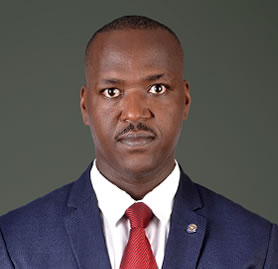Africa Energy Futures: Burundi
Over the last 5 years, how has the energy mix changed, and what have been the key drivers?
Ranked in order of importance, the main sources of energy consumed in Burundi are: biomass (wood), petroleum products, electricity from hydropower sources and peat.
About 98% of the Burundian population, both urban and rural, use wood and charcoal as an energy source, mainly for heating and cooking. Access to electricity stands at less than 5% of the population and the number of households with access to electricity is estimated at 7%, corresponding to 52.1% of urban households and 2% of rural households. The energy mix has remained virtually unchanged since 2010.
New hydroelectric power stations at Jiji and Mulembwe with a total capacity of 48 MW are under construction. These new power plants will double Burundi's production capacity, which is currently 39 MW. They will also increase the national electrification rate from 5% to 8% and help to bridge the energy deficit.
Burundi's solar resources have a lot of potential. The average sunshine received annually is close to 2000 kWh/m²/year, which is similar to the southern Mediterranean regions in Europe. Initiatives in this direction are already under way. For example, in 2017 construction began on a photovoltaic solar power plant (7.5 MW) in Mubuga in the province of Gitega.
The liberalization of energy services on production (transport and distribution are provided by the government) began in 2015 following a new law on the reorganization of the electricity sector in Burundi. It involves attracting investors to the sector and promoting the emergence of national power sources through the use of public-private partnerships (PPP).
What is the outlook for the energy and natural resources sector in the next 5 years? In particular:
Key policy decisions
- Rational use of hydroelectric and solar potential, peat, municipal waste and geothermal resources;
- Improving the biomass sector (fuelwood, charcoal, peat, municipal waste) while safeguarding the environment;
- Promoting renewable and alternative energy;
- Improving the management capacities of the energy sector;
- Ensuring the security of the petroleum product supply chain;
- Promoting the mining and petroleum sector to optimize its contribution to the country's growth and socio-economic development; and
- Integrating environmental issues in the mining sector
Main policy challenges
- Increasing the energy supply;
- Demographic pressure;
- Rehabilitation and construction of infrastructure;
- Control of energy losses and production costs;
- Controlling petroleum products costs;
- Capacity building of personnel in the energy sector;
- Diversification of energy sources;
- Upkeep and maintenance of energy equipment;
- Rational use of traditional energy sources (wood, charcoal); and
- Mitigation of climate change.
The anticipated role that renewables and/or new technologies will play
Burundi faces an access to energy problem. With a growing population and rampant urbanization, renewable energies are an alternative to managing the energy crisis. The 2012 report on the opportunities in the renewable energy sector shows that Burundi has many assets: significant hydroelectric potential, abundant sunshine, geothermal resources to be developed, peat resources and other possible biomass resources (waste and bagasse / sugarcane pulp).
Hydropower, the primary source of electricity production in Burundi, is still largely under-exploited and could be the way forward for the growth of electricity supply in the years to come. Well managed forest resources can also become a renewable energy source.
Burundi's high population density and high levels of sunshine make the country an ideal candidate for the distribution of off-grid solar energy.
In 1983, Burundi's hydroelectric field was evaluated at 1700 MW, of which about 300 MW was economically exploitable. This deposit could be even larger according to recent studies. There are 156 potential sites and 29 existing sites or in the process of being equipped. Currently, around 30 sites are operational.
What are the key investment opportunities in the energy and natural resources sectors over the next 5 to 10 years?
Burundi has a varied and rich subsoil. There are relatively small deposits of gold, cassiterite, colombite-tantalite, vanadium, iron, phosphate, titanium, cobalt, limestone and carbonatite. Its largest mineral resource is nickel, with reserves estimated at 200 million tons. Mining is a government priority. To this day, however, it remains essentially artisanal, although investment opportunities exist.
Ongoing reforms aimed at improving transparency in the industrial mining sector are promising more investment opportunities in this sector including in the industrialization and diversification of exploitation.
There will be investment opportunities in the energy sector following its promotion through the use of PPPs. The challenge will be to reconcile the capacity of consumers and the cost of production for investors.
With particular focus on sustainability, and on reducing carbon emissions, how will the energy and natural resources landscape change over the next 5 to 10 years?
As part of the National Reforestation Program, Burundi has committed to increasing carbon dioxide sinks by reforesting 4000 hectares per year for 15 years from 2016 (8000 ha/year).
In the energy sector, Burundi is building three hydroelectric power stations. This program will bring the electrification rate to 30%. Burundi also plans to reduce its emissions by 3% by 2030 (cumulative reduction in emissions).
In addition, technological measures have been considered to mitigate greenhouse gas emissions:
- Carbonization of peat to make it usable by households;
- Replacement of biomass boilers with electric boilers;
- Construction of new hydroelectric power stations; and
- Increase in traffic lights that regulate road traffic, reducing traffic jams, one of the causes of high fuel consumption in the country.
This article forms part of Africa Energy Futures:


